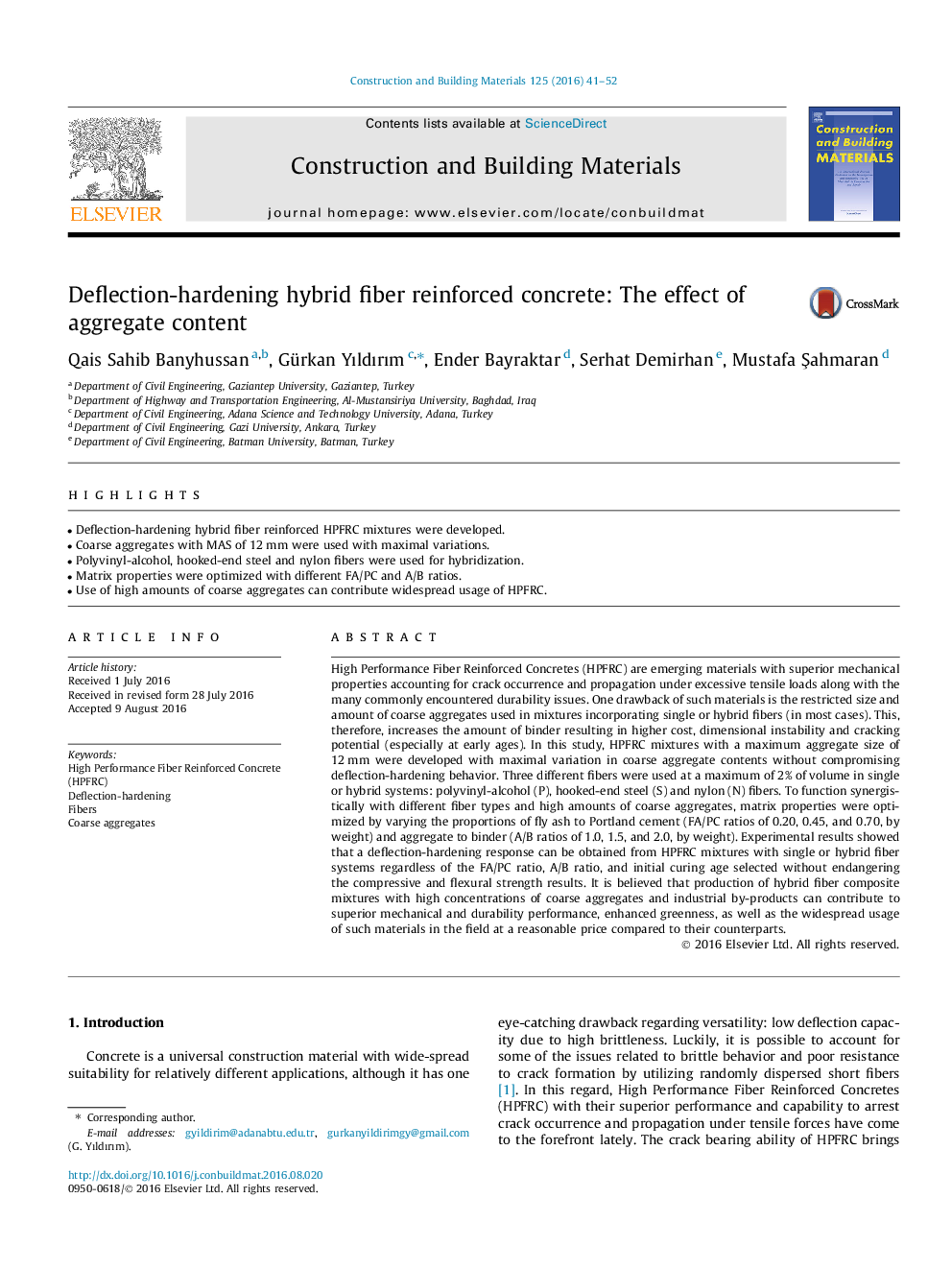| Article ID | Journal | Published Year | Pages | File Type |
|---|---|---|---|---|
| 4918596 | Construction and Building Materials | 2016 | 12 Pages |
Abstract
High Performance Fiber Reinforced Concretes (HPFRC) are emerging materials with superior mechanical properties accounting for crack occurrence and propagation under excessive tensile loads along with the many commonly encountered durability issues. One drawback of such materials is the restricted size and amount of coarse aggregates used in mixtures incorporating single or hybrid fibers (in most cases). This, therefore, increases the amount of binder resulting in higher cost, dimensional instability and cracking potential (especially at early ages). In this study, HPFRC mixtures with a maximum aggregate size of 12Â mm were developed with maximal variation in coarse aggregate contents without compromising deflection-hardening behavior. Three different fibers were used at a maximum of 2% of volume in single or hybrid systems: polyvinyl-alcohol (P), hooked-end steel (S) and nylon (N) fibers. To function synergistically with different fiber types and high amounts of coarse aggregates, matrix properties were optimized by varying the proportions of fly ash to Portland cement (FA/PC ratios of 0.20, 0.45, and 0.70, by weight) and aggregate to binder (A/B ratios of 1.0, 1.5, and 2.0, by weight). Experimental results showed that a deflection-hardening response can be obtained from HPFRC mixtures with single or hybrid fiber systems regardless of the FA/PC ratio, A/B ratio, and initial curing age selected without endangering the compressive and flexural strength results. It is believed that production of hybrid fiber composite mixtures with high concentrations of coarse aggregates and industrial by-products can contribute to superior mechanical and durability performance, enhanced greenness, as well as the widespread usage of such materials in the field at a reasonable price compared to their counterparts.
Keywords
Related Topics
Physical Sciences and Engineering
Engineering
Civil and Structural Engineering
Authors
Qais Sahib Banyhussan, Gürkan Yıldırım, Ender Bayraktar, Serhat Demirhan, Mustafa Åahmaran,
